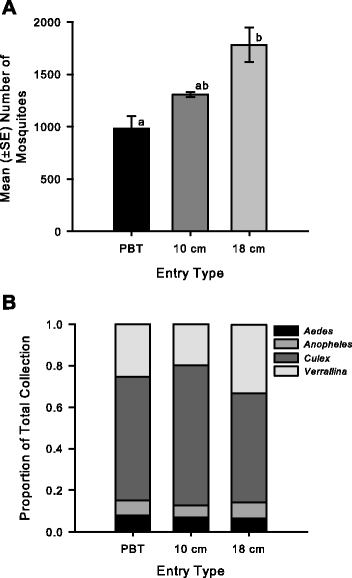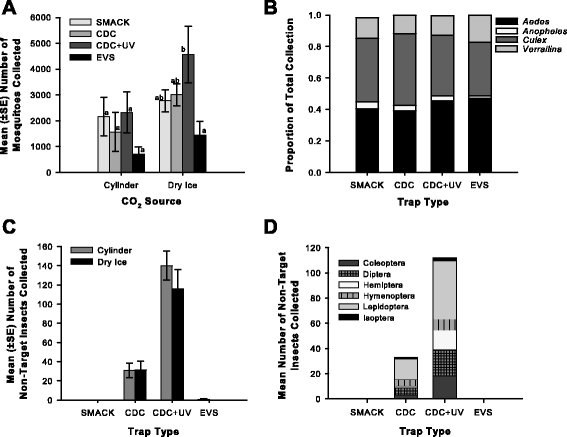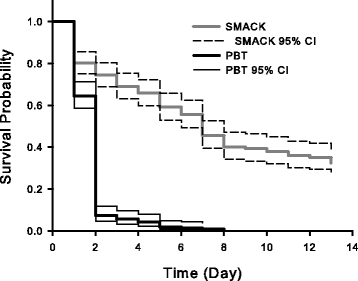Development and field evaluation of the sentinel mosquito arbovirus capture kit (SMACK)
- PMID: 26444264
- PMCID: PMC4595114
- DOI: 10.1186/s13071-015-1114-9
Development and field evaluation of the sentinel mosquito arbovirus capture kit (SMACK)
Abstract
Background: Although sentinel animals are used successfully throughout the world to monitor arbovirus activity, ethical considerations and cross-reactions in serological assays highlight the importance of developing viable alternatives. Here we outline the development of a passive sentinel mosquito arbovirus capture kit (SMACK) that allows for the detection of arboviruses on honey-baited nucleic acid preservation cards (Flinders Technology Associates; FTA®) and has a similar trap efficacy as standard light traps in our trials.
Methods: The trap efficacy of the SMACK was assessed against Centers for Disease Control and Prevention (CDC) miniature light traps (standard and ultraviolet) and the Encephalitis Vector Survey (EVS) trap in a series of Latin square field trials conducted in North Queensland, Australia. The ability of the SMACK to serve as a sentinel arbovirus surveillance tool was assessed in comparison to Passive Box Traps (PBT) during the 2014 wet season in the Cairns, Australia region and individually in the remote Northern Peninsula Area (NPA) of Australia during the 2015 wet season.
Results: The SMACK caught comparable numbers of mosquitoes to both CDC light traps (mean capture ratio 0.86: 1) and consistently outperformed the EVS trap (mean capture ratio 2.28: 1) when CO2 was supplied by either a gas cylinder (500 ml/min) or dry ice (1 kg). During the 2014 arbovirus survey, the SMACK captured significantly (t 6 = 2.1, P = 0.04) more mosquitoes than the PBT, and 2 and 1 FTA® cards were positive for Ross River virus and Barmah Forest virus, respectively, while no arboviruses were detected from PBTs. Arbovirus activity was detected at all three surveillance sites during the NPA survey in 2015 and ca. 27 % of FTA® cards tested positive for either Murray Valley encephalitis virus (2 detections), West Nile virus (Kunjin subtype; 13 detections), or both viruses on two occasions.
Conclusions: These results demonstrate that the SMACK is a versatile, simple, and effective passive arbovirus surveillance tool that may also be used as a traditional overnight mosquito trap and has the potential to become a practical substitute for sentinel animal programs.
Figures





References
-
- George TS. A sentinel herd system for the study of arbovirus infections in Australia and Papua-New Guinea. Vet Res Commun. 1980;4(1):39–51. doi: 10.1007/BF02278479. - DOI
-
- Monath T, Sabattini M, Pauli R, Daffner J, Mitchell C, Bowen G, et al. Arbovirus investigations in Argentina, 1977–1980. IV. Serologic surveys and sentinel equine program. Am J Trop Med Hyg. 1985;34(5):966–975. - PubMed
-
- Knope K, Whelan P, Smith D, Nicholson J, Moran R, Doggett S, et al. Arboviral diseases and malaria in Australia, 2010–11: annual report of the National Arbovirus and Malaria Advisory Committee. Commun Dis Intell Q Rep. 2013;37(1):E1–20. - PubMed
MeSH terms
LinkOut - more resources
Full Text Sources
Other Literature Sources
Medical

